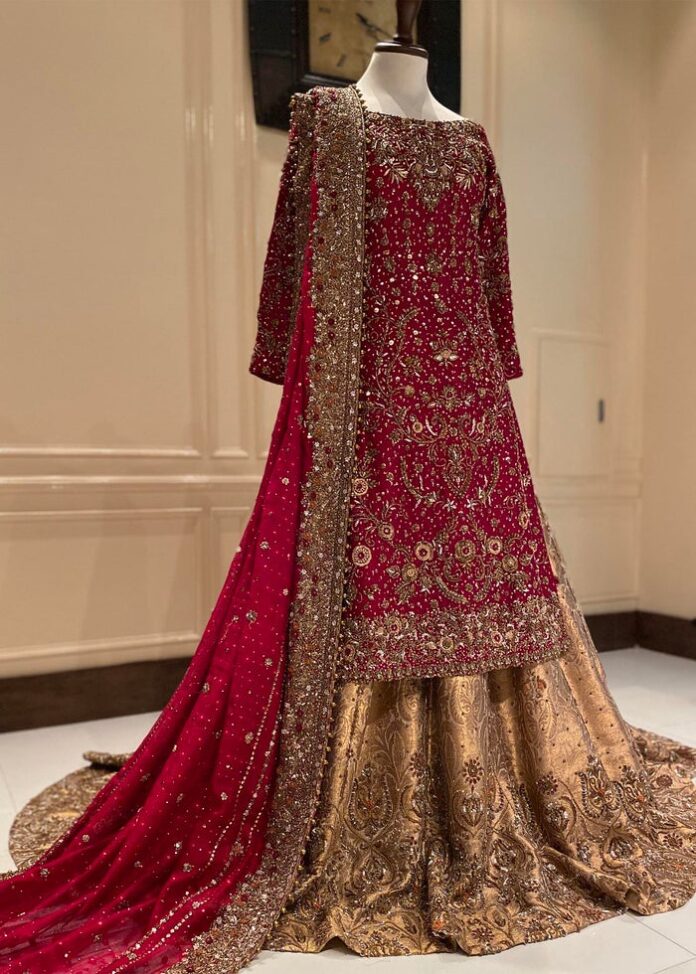When you study economics in A levels or take a principles of economics course at university, one of the things that is bound to be a part of the syllabus is the concept of the circular flow of income. This flow of income, which results in a ‘circular economy’ is a hypothetical model in which there is an economic system of closed loops in which raw materials, components and products lose their value as little as possible.
The ‘closed loop’ aims to keep leakages to a minimum, and promote sustainability. The basic model suggests that there are no leakages or injections. Everything earned is spent, and so on. As the model gets complex, you add more players and leakages and injections. Perhaps one of the examples that lends itself best to this model is the retail fashion industry. Both because the fashion industry is built upon being very wasteful and because concepts of sustainable fashion have permeated into mainstream fashion discourse, including in Pakistan.
Try to understand it like this. The current state of the world is run by consumption and consumerism in what is very much a linear economic approach where things are produced, used, and then thrown away or discarded. An example of that in the world of fashion is what is known as ‘fast fashion’ – where mass market retailers use cheap labour in the third world to produce inexpensive clothing rapidly in the third world in response to trends. The clothes produced here are cheap, do not stay in fashion for long, and have a much shorter lifespan.
Circular fashion, inspired by the no-waste ethos of a circular economy, goes against the grain and believes in producing clothes that can be worn for a long duration of time and are of sturdy material that doesn’t end up at a landfill three months after being bought. In a way, circular fashion is the anti-fast fashion movement. Where Fast fashion products usually last a season in terms of durability and style, circular fashion aims to produce clothes that are seen as not a passing fad but as staples that are timeless,
To put this in perspective, the fashion industry generates 13 kilograms of waste for every person on the planet in a year. Less than 1% of the material used to produce clothing is recycled into new clothing. Globally, the fashion industry is responsible for 10% of humanity’s carbon emissions and the industry is constantly adding billions of clothing to the market every year with a vast amount going to waste or used once or twice and being discarded and relegated to landfills. Circular fashion aims to address this problem and reduce waste in the industry by prolonging the life cycle of clothing already within the market leading to a more sustainable and conscious use of clothing.
Keeping that in mind, a number of startups have emerged that sell preloved clothes. The startups are small, and are not tech-based. Their model is simply collecting pre-loved clothes (as they are called by supporters of the sustainable fashion movement), cleaning them up, marketing them, and selling them online. Now, sustainable fashion in Pakistan is being taken a step forward with some new companies getting into the business of lending clothes.
Rent It, based in Lahore is one such startup where you can both rent or lend your clothes. In order to rent, all you have to do is go onto their website, pick an outfit and date, and book it. It will then be dry cleaned and delivered to your place. You will have to return the outfit when you’re done. They also provide alterations and customization. As a lender, you can ‘monetize your wardrobe’ and lend your outfits to them too. It offers a solution for two different problems – having too many clothes and having too few. However, the question is whether the market is big enough for there to be demand for this kind of service, and whether or not sustainable fashion is catching on fast enough to warrant such changes.
Sustainable fashion in Pakistan – the size of the market
Back in October last year, Profit did a story on the ‘online landa.’ The story was about how clothes given out as charity end up at the landa in third world countries like Pakistan, and how the landa was being frequented not just by the poor but also by people from relatively affluent backgrounds with an eye for brands buying these clothes cheap and selling them online or over Instagram. One of the most interesting aspects of the story was how the concept of sustainable fashion was used to market these clothes.
The way this starts is that Charity organizations in developed countries like Oxfam, the Salvation Army, and even the Roman Catholic Church collect second-hand clothes from their donors. These donors often think that the clothes will be shipped off to the third world to be distributed freely among people that need them. This is a common misconception. Packing the clothes and distributing them would be an expensive task, so instead these charity organisations end up selling these clothes and using the money to fund other charitable activities.
To be fair to the major charities, they do not claim to give your old jeans and T-shirt away for free, but it is not readily apparent that donated clothes will be sold to traders who will then retail them. These retailers have made a business out of hand-me-down clothing. The clothes are literally bundled up and sold at a rate of per-kilogram. These retailers then sift through the clothes, and separate torn or useless items. are recycled and used again as things like insulation materials, and soiled garments end up in landfill or incinerated.
The market for this is massive. One report in The Guardian estimated that globally the wholesale used clothing trade is valued at more than £2.8 billion, and Pakistan plays a significant role in this. In the past few years the demand for these clothes has only increased. According to data released by the Pakistan Bureau of Statistics (PBS), during the last fiscal year (FY 2020-21), the import of used clothing increased by 90 per cent to $309.56 million and it weighed 732,623 metric tonnes. The year before that, there was an increase of 83.43 percent in terms of price. Pakistan imported 186,299 metric tonnes of pre-used garments during the first two months of the FY 2021-22 (July-August), which makes up for an increase of 283 per cent over the same period of last year, which translates to a spending of $79 million.
These clothes are then bought by people who sell them online at a markup. They brand their products as ‘pre-loved’ or ‘rescued’ and supporting sustainable fashion, which they claim is environmentally friendly. Essentially, they are making fast fashion even cheaper by making it more recycle-friendly. While one can doubt whether it is a love for the environment that drives people buying off these pages or cheap clothes, it has been a tactic that has been successful, and it has been a win for the concept of circular fashion.
Now imagine applying the same concept not to fast fashion but to high-end bridal couture. How, you ask? Where will you find high-end wedding dresses and clothes at the landa? You won’t. The answer is finding them in people’s homes and hoping customers will be willing to rent out clothes. The only question is whether or not there is enough demand.
Is the bridal couture market big enough?
There is no exact way to figure out how big the size is of the Pakistani bridal couture industry. The reason is because the industry is, no surprises, quite informally organised. While we see big names selling expensive dresses, what one needs to remember is that most of the sales are off the books or not reported. Smaller designers do not have accurate records, and understate their sales, and that is if they pay taxes to begin with. In short, what we’re trying to say is the industry is filled with tax evaders and avoiders.
Profit, however, has managed to reach an arbitrary number. The size of the wedding dress industry for just a wedding dress and not the reception is sized at Rs 105 billion. For Shadi and valima you could say it’s Rs 210 billion industry.
How did we get to this number? This is our methodology, which you can feel free to skip:
As per the Pakistan Demographic and Health Survey 2017-18, approximately 2.7 to 3 million people got married in 2018. Assuming the higher end of the range, that means 1.5 million weddings happen in a year. Considering a 2% growth rate in population, we’re going to assume that the number of weddings also increases by 2% in a year. That means approx. 1.6 million weddings happened in 2021.
In order to calculate the size of the wedding industry we’ve assigned weightages and multiplied it with average prices. Doing so, we were able to estimate the current size of the bridal couture industry at Rs 105 billion. However, doing so, the average price of a dress comes to Rs 65,750. This is because although the weightage for the top 0.5% is less, it is able to contribute significantly to the total revenue.
Moreover, if we continue with our 2% growth rate assumption, and add 10% inflation, we expect the bridal dress industry to reach Rs 300 billion by 2030.
It is important to note that this is our estimate for the market size of just one bridal dress. Pakistani weddings have at least two events, the Nikkah/ Rukhsati and Valima. If you’re in the mood for more festivities, these could be more. Moreover, on the occasion of a wedding, the girl buys party wear to add to her dowry or trousseau, in addition to the party wear clothes that the groom’s side gifts.
That being said, one can assume that the Rs 105 billion estimate is significantly small when we talk about the Pakistani formal wear segment. All this, however, is mostly linear fashion. In the past the only instance a bride were to give away her bridal dresses were if the wedding was called off or ended. Most of these outfits, despite all that, are usually worn a couple of times in a lifetime. One could supposedly cap it at 5 times.vThis is where the need for circular fashion really comes in considering these dresses could be put to better use and the resources could be utilised more efficiently.
Why it makes sense
If we exclude the good for the environment bit and talk about blatant consumerism, the availability to rent an outfit is great for people that are brand and image obsessed. For instance, wearing a saree by Sabyasachi is out of the question for a large majority of people at their friend’s wedding for example. The option to rent out might change that.
“After the success and popularity of similar global models – the rental model was a no brainer- the initial ideation around rent it started off as a passion project 3 years ago, everything checked out, it made perfect sense – only if we could get past the barrier of the taboo attached to rent it and the sentiments attached to the bridal outfit by highlighting the pros and addressing the cons or concerns i.e. hygiene and authenticity,” says Fatin Gondal, who co-founded LetsRentIt with Saleeha and Anush.
For consumers that want to wear Sabysachi to flaunt to their instagram and friends that they are, they can now rent one for Rs 20,000. Vanity purposes fulfilled without having to drive a hole in your pocket and add another saree to your wardrobe that you’d wear maybe four or five times max. Currently, LetsRentIt stocks almost all the major Pakistani brand names from Bunto Kazmi, Elan and Faraz Manan to Kamiar Rokhni and Sana Safinaz. They also have some big names from across the border such as Sabyasachi. Apart from luxury designers they also provide wedding clutches for rent and will soon be expanding into semi precious jewellery as well.
They rent out clothes both for the bride and the people attending the wedding. Currently, their most expensive item to rent out is a Bunto Kazmi bridal that rents at Rs 150,000, and their cheapest would be a printed jacket and trouser set from Sania Maskatiya for Rs 5000.
“As we all know the fashion industry in Pakistan is largely undocumented and it is hard to come up with an accurate and exact number but according to our in house calculations our approximate addressable market is about 5.2 million women and we aim to grow that number,” Fatin explains, saying that their hope is that the idea will not just catch on but gain popular support as the right way to do things because of its environmentally friendly tag. And according to the founder, the response has been better than they expected.
“When we first started out we expected push back from the market but the response we received and have been receiving as we operate has been astounding. We’re providing designer luxury wear at a fraction of the cost and so the market is definitely opening up to the idea of renting clothes. We always knew Pakistan was uniquely positioned for success with this model in terms of geography, logistics, and controlled costs of dry cleaning and maintainability and repair of outfits. This is true especially when it comes to rentals for wedding wear and event wear,” she says. “The large number of weddings taking place over here and the almost prohibitive cost of luxury designer wear but we never expected the range of people we would end up catering to. From the middle class brides to expat brides to fashionistas who like to wear a new outfit at every event they attend, our clothes have been rented by all.”
The concept is an interesting one. For starters, a lot of people that are aware of high-end brands rarely get to wear them because affording it would be too difficult. Renting would be within their range, it would be environmentally friendly, and at the price that they would otherwise get one outfit for a wedding, they will be able to rent multiple outfits for different events and not have to repeat what they are wearing either. Normally, not repeating outfits is a major contributor to the environmental damage fast fashion causes. This is a sustainable way of managing that.
Whether it will catch on in Pakistan is another question. On the one hand, Pakistanis can be very picky about the kind of fashion they entertain and clothes are a major topic especially with the ostentatious wedding culture here. On the other hand, the booming success of the earlier mentioned online landas shows that there is a space and demand for sustainable fashion.
Globally, we are already seeing the trend move towards circular fashion with a lot of new rental platforms taking off in many parts of the world. We are also seeing big brand names like Burberry and department stores like Harrods and Selfridges also embracing the rental revolution. It is entirely possible that not long from now, we see Pakistan’s industry moving more towards circular fashion as well. In this era where there is an increasing emphasis on sustainability and eco-friendly practises it is the future of all industries, especially as soon as the fashionable elite catch on to the fad.


























Rejuve by Aliya Farooq is the best Beauty Salon in Karachi. Our experts take care of all that you need: Beauty treatments, beauty parlors, and fine dining. We offer a wide range of services, including Beauty facials and make-up services, Lash extensions, pampering, eye treatments and much more. Our Rejuve Beauty Salon provides the best professional beauty services in Karachi which include hair styling, coloring, straightening, short hair and dye treatments.
The people in Pakistan always spend a lot on clothes even if it means taking loans, so they might start to rent wedding clothes more now, because these clothes are usually not worn after the wedding. In our recent article we also looked at some of the affordable bridal clothing designers that middle class can afford without going totally broke. Some of them were Maheen Shah, Hina Mohamed, and Suffuse by Sana Yasir. Thanks
Hi
Good information
Kindly visit my website i have thousands of free SVG files and free theme, Plugins
freesvg.uk
An online buyer can shop products with comfort without any hassle, he has the comparability of prices offered by different retailers.
is dress ki information Dy saktY hum ap sy kisi app sy rabta ni kar sakty Kia WhatsApp ya Instagram